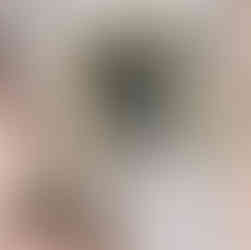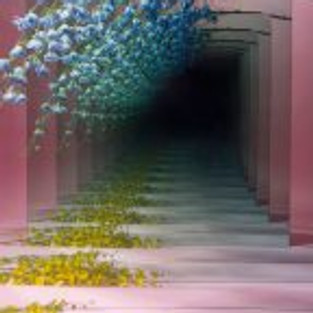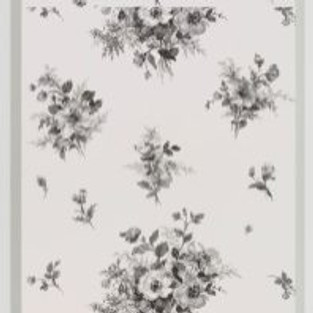Shulamit Nazarian Opens “Escape Attempts” in their new Hollywood Location
- artandcakela
- Feb 26, 2017
- 3 min read

Escape Attempts. Photo Courtesy of Shulamit Nazarian.
Sliding the Edges of Minimalism
Escape Attempts at Shulamit Nazarian
By Anna Garner
Through April 8th
Escape Attempts is the inaugural exhibition at Shulamit Nazarian’s new Hollywood location, a group exhibition of seven female artists (although this is not expressly stated) whose work adopts and challenges the aesthetics of Minimalism. Stylistically the work is linked through uncomplicated use of color, repetition, architecturally geometric abstractions, fundamental forms, and the latent potentials of empty space. These defining formal elements of Minimalism are charged with an emotive presence traditionally absent from the neutral framework of Minimalism, belying the expressly male and emotionally removed lineage.
The show is curated by New York-based writer/curator Kathy Battista whose own research concentrates on feminist methodologies and practices in art. The absence of statement that all artists are women avoids the constraint of categorization that determines the context in which work is read. From a feminist perspective this recognizes a dominantly female exhibition as a norm, not as an afterthought on inclusion. One cannot help but relate this exhibition to the recent Hauser, Wirth & Schimmel show, Revolution in the Making: Abstract Sculpture by Women 1947 – 2016 that featured female sculptors working with Abstraction and endorsed the contemporary importance of abstraction.

Escape Attempts. Photo Courtesy of Shulamit Nazarian.
The title, Escape Attempts, is taken from an essay of the same name by historian/critic Lucy Lippard. Lippard defines the movements of Minimalism and Conceptualism, speaking specifically about how the artists responded to political turbulence in the 1960s and 1970s. However in reflection Lippard realizes the most effective political imagery of the era did not come from art, but from popular and political forms. The formal and structural emphasis of Minimalist work liberated the directives of representation and therefore clear cultural content. The curator’s statement for Escape Attempts suggests the artists in this show are also, “engaging a vocabulary of cultural reference specific to this [current] era.” But similarly though the works in Escape Attempts are formally captivating, most pieces are ineffective at making consequential references to the tenuous era we live in.
Two artists whose work does successfully hit this mark are Carmen Argote and Susan Hefuna. Argote works, Folding Structure (lawn), Folding Strucutre (pool), and Folding Structure (raw) are a series of un-characteristically small, roughly no more than 24x24x24”, sculptures that rest in the middle of the gallery floor. The architecturally formal works easily bridge masculine and feminine, with clean, sharp forms and folded fabric. The materials, paper mache and bent acrylic plastic, also suggest impermanence and rearrangement, underscoring her overarching themes of ritual, habit, and immigrant identity. The simple objects leave room for questions about permanence, positionality, and the mutable built environment as substitute for home.
German-Egyptian artist Susana Hefuna’s sculptural wall pieces, refer to mashrabiya screens used in North African and Middle Eastern homes to divided between public and private. The screens are perforated for women to be able to see out but not for the passerby to see in. The artist abstracts these symbolically loaded forms to speak about visibility. Her most successful are three small pieces titled, Grid Drawing, these abstract the pattern of the mashrabiya to an unrecognizable point. The screens are so small and the perforations are so large they no longer limit vision. The functionality collapses, dissolving the barriers between private and public, seen and unseen.
Overall the exhibition is sleek and aesthetically intriguing, and though it does not fully embody the intention of cultural reflection, it does allow emotive reflection and the subtle space of viewers’ own perceptions. The strengths of the exhibition lie in this, in the work of Susan Hefuna and Carmen Argote, and in the continued affirmation of women in Minimalism and Abstraction.
#losangeles #abstraction #california #conceptual #losangelesartist #CarmenArgote #AlexMcQuilkin #art #SusanHefuna #women #GridDrawing #VirginiaOverton #onlinemagazine #LosAngelesArts #losangelesart #hollywood #contemporaryart #shulamitgallery #CindyHinant #southerncalifornia #LosAngelesArtists #abstract #contemporary #conceptualart #conceptualism #artgallery #EscapeAttempts #ShulamitNazarian #conceptualartist #artandcake #SarahMeyohas #artexhibition #ArtandCakeLA #fineart #artists #arts #minimalism #AnnaGarner #artreview #sculpture #artexhibit #NaamaTsabar #artmagazine #ArtandCulture #Grid #Femail #LucyLippard #LA #laart #KathyBattista #losangelesgallery










































